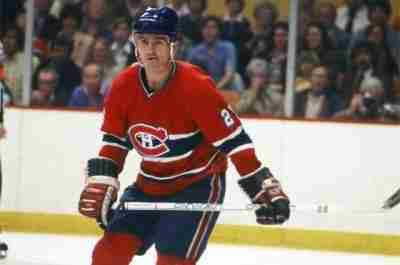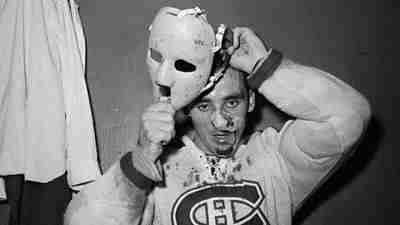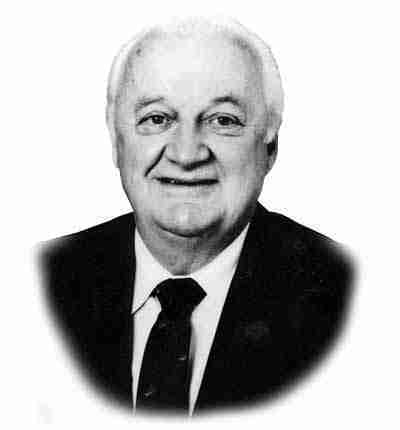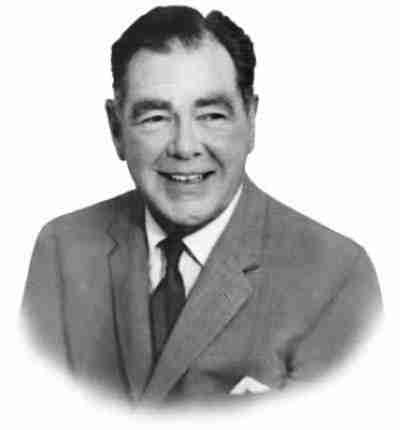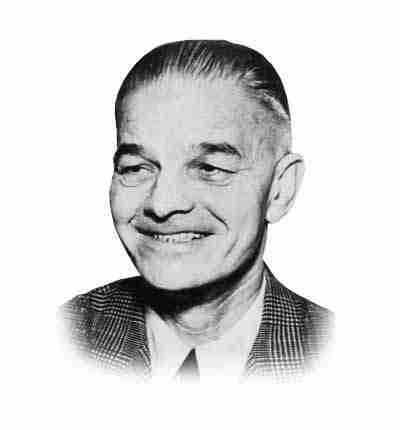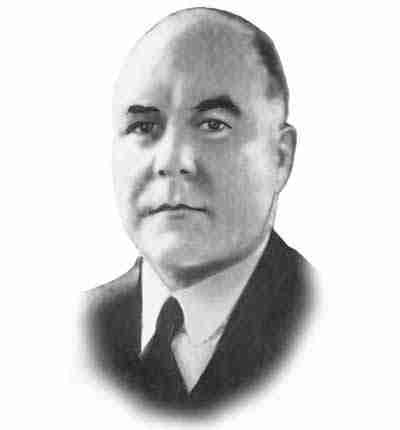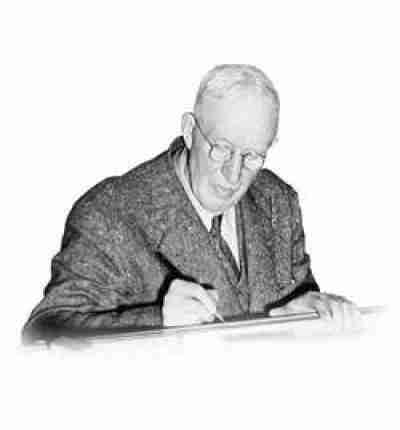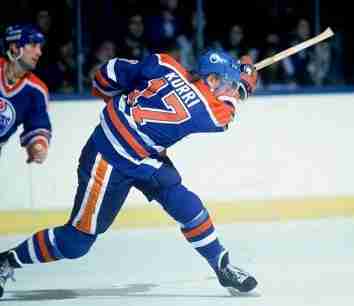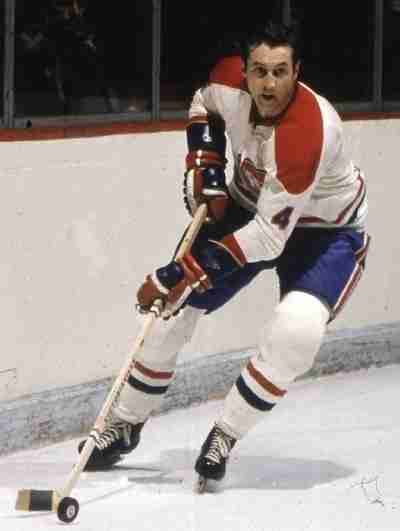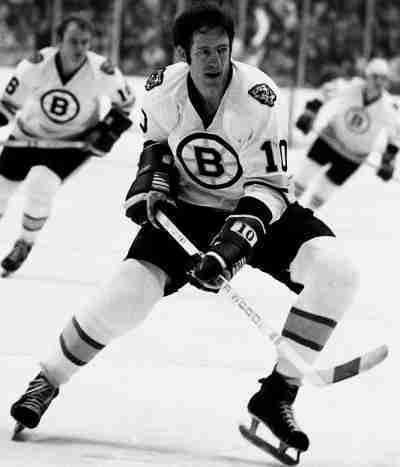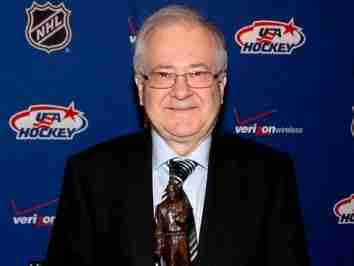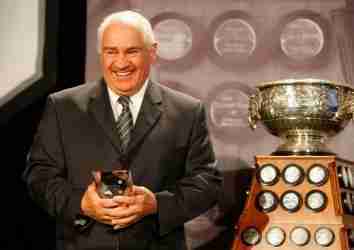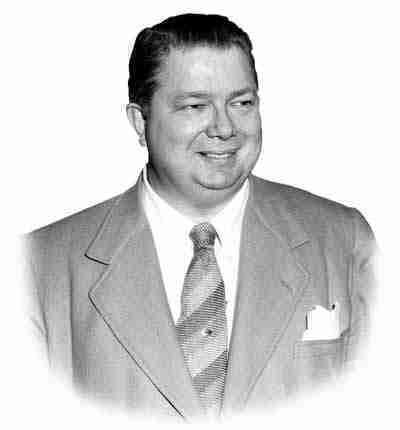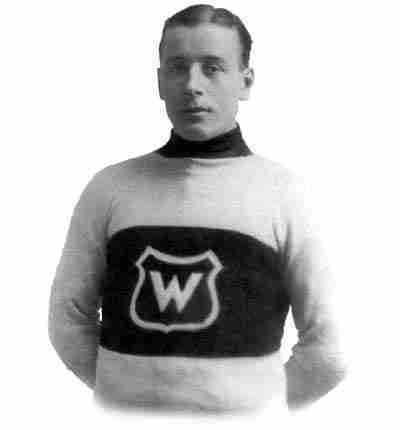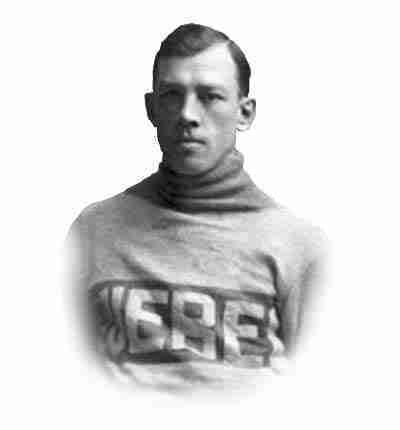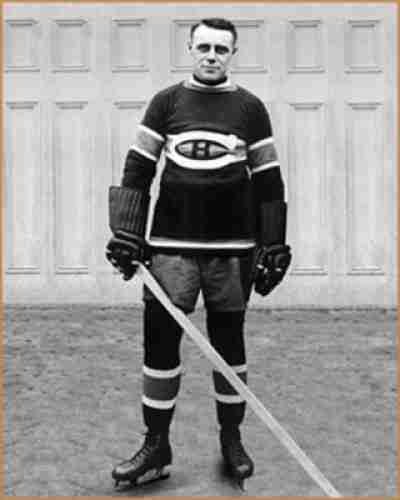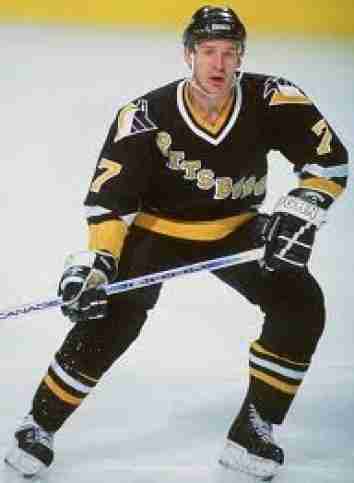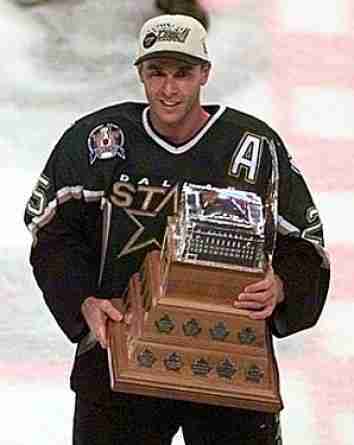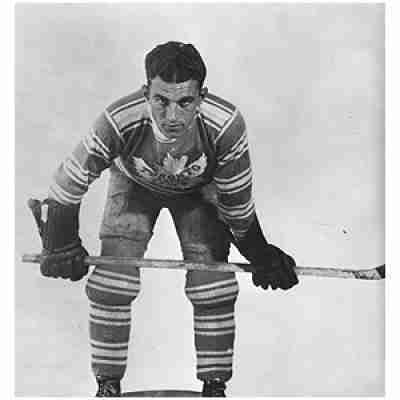An eight time Stanley Cup Champion with the Montreal Canadians, Jacques Lemaire was a Centre who may not have led his team in scoring, but was a vital part of the championships that his team accrued. Lemaire was a point per game player, and played in two All Star games, but he was always at his best in clutch situations and shone brightest during the NHL playoffs. It was likely because of that fact, that Lemaire was considered a Hall of Fame performer as though he was never considered the best player on his team, he was the guy you knew you could count on when you needed it most.
The dynasty of the late 1950’s Montreal Canadians had a plethora of scoring power, all of which felt comfortable to let it fly on the ice with the knowledge that Jacques Plante was in between the pipes. Plante is known for being the first goalie to regularly wear a protective mask, which seems to be what he is remembered mostly for. That may be an important fact, but we would rather think of his six Stanley Cups, seven Vezinas, one Hart and seven All Star selections.
Although Jake Milford never won the Stanley Cup, he was considered one of the top executives in the NHL during his tenure. Milford was a successful General Manager winning the Central League Title four times. Moving up to the big dance, he took over the GM position with the Los Angeles Kings and took them to their best record in the league. He would do the same in Vancouver, assembling a team that went to the Stanley Cup Finals for the first time in that franchise’s history. Again, he may never have won a Cup, but he put together talent in places that gave hope to hockey fans sooner than they would have expected.
The son of Hockey Hall of Fame inductee, James E. Norris, James D. Norris assisted in the running of the Detroit Red Wings which his father owned. The younger Norris looked to strike out on his own, and along with Arthur Wirtz, purchased the struggling Chicago Black Hawks. Over time, he helped to make the team a viable franchise and in the early 60’s Chicago was arguably the most talented team in the NHL.
James Dunn’s lifelong work in the world of Manitoba Hockey is what got him his induction into the Hockey Hall of Fame. A minor league hockey player himself, Dunn returned from World War I unable to play, but still was still involved in the minors in an administrative capacity. Later, he began working with the Manitoba Amateur Hockey Association where he served as Secretary, Vice President and a six year stint as the President. Dunn would repeat the same climb with Canadian Amateur Hockey Association, becoming its President in 1955.
A hockey enthusiast from a very wealthy family, James E. Norris attempted to put a second team in Chicago but after that failed he bought the Detroit Falcons and rechristened them the Red Wings and turned that team into a National Hockey League power. This was at an essential time as the strength of that club countered the folding of franchises in Ottawa and Montreal (Maroons), and enabled the NHL to become a viable entity in the sporting world. James E. Norris was the type of owner that you wanted to be associated with your favorite team in the sport you love.
Likely not part of the first induction class due to hard work that he did to make a Hockey Hall of Fame happen in the first place (Seriously, without Sutherland this would have taken years longer), James T. Sutherland was part of the glut of builders who were part of the 1947 Class.
Jari Kurri was not the first player from Finland to grace a National Hockey rink, but he did become the first superstar from his Scandinavian country. Kurri had the fortune of being selected by the Edmonton Oilers and he was immediately paired with Wayne Gretzky; where they helped each other dominate the stat sheet. The original “Finnish Flash” hit the 100 point mark six times and finished two shy of 1,400 in his career. Kurri also captured the Goals title in 1986, an incredible feat considering the loaded offensive talent in the 1980’s. What Kurri did not always get credit for was his defensive ability. Which was naturally overlooked on those powerhouse Oilers teams. This two dimensional player also won the Lady Byng in 1985. Jari Kurri became the first Finnish player into the Hockey Hall of Fame.
One of the finest players of all time, the Montreal Canadians was fortunate to have Jean Beliveau for his entire professional career. Beliveau was a vital part of ten Stanley Cup wins, and just seemed to excel in all facets of the game. “Le Gros Bill” retired with two Hart Trophies, and as the leading scorer in NHL playoff history.
A class act on and off the ice, Jean Ratelle was on many good teams (though never won the Stanley Cup) and was a two time recipient of the Lady Byng Trophy. He would twice top the 100 point mark and finished with a total of 1,267 career points. As good as he was at scoring and playmaking, he was also known for making very few mistakes on the ice and always putting his team in a better position to win games. Jean Ratelle may have only been named to one Post Season All Star game, but he did win the Ted Lindsay Award in 1972 which was indicative of the player deemed most valuable in the NHL by his peers. That accolade is indicative of the respect he had throughout the league. Although he did not win a Cup, he was a big part of Team Canada’s 1972 Summit Series win.
Starting off as the Eastern Scout for the New York Islanders in 1972, Jim Devellano gradually worked his way up the ladder in Long Island and with his help the Islanders became a powerhouse and a dynasty in the National Hockey League. Jim would bolt for Detroit and would become their General Manager in 1982, and would remain in the Motown front office for decades and helped the Red Wings win four more Cups. Seven Stanley Cups for an administrator? It is easy to see why he entered the Hockey Hall of Fame.
This is not one of our favorite inductions in the Hockey Hall of Fame builder category. Jim Gregory was a competent executive for the Toronto Maple Leafs in the 1970’s, and would later become the Director of Central Scouting, and the Executive Director of Hockey Operations. He would also later become the Chairman of the Hockey Hall of Fame Selection Committee in 1998, and while still serving in that role, become inducted himself. Are we alone in finding that a little fishy?
More than anything, we get a kick out of an entry to the Hockey Hall of Fame being born in the West Indies. That selection, Jim Hendy also stands out in the Hall, as his Hockey related work did not happen on the ice, or behind a bench. It took place mostly with his pen and a calculator.
A very good Left Winger, Jimmy Gardner won four Stanley Cups with two different Montreal teams. Gardner was one of those players who may have been good but was he the man who helped propel his squads to multiple championships? It may have been more of being at the right place at the right time.
English born and Canadian bred, “Bad” Joe Hall was a rough and tough Defenseman in the first era of organized hockey. Hall was also a very good goal scorer and was a solid part of the Quebec Bulldogs winning the Stanley Cup in 1912 and 1913. Unfortunately, Joe Hall’s life met with a tragic ending. Hall was part of the Montreal Canadians who were competing with the Seattle Metropolitans for the Cup in 1919. The series was halted at two games apiece when an influenza epidemic rocked the West Coast and most of the players contracted it. The Cup was not awarded that season and all of the sick players recovered; except for Joe Hall.
A goal scoring machine (his 44 goals in 20 games remains the highest GPG average ever), Joe Malone would twice lead the National Hockey League in goals and points. As part of the powerful line with Newsy Lalonde and Didier Pitre, Malone was the goal scorer of the first great line of the National Hockey League. Overall, Malone would average well over a goal a game during his career and would score five goals or more in a game ten times. Seems like a Hall of Famer to us!
No matter how many other Americans hit the 500 goal and/or 1,000 point mark in the NHL, Joe Mullen will always have the honor of being the first. Mullen was a dependable forward for multiple NHL teams and hit the 40 goal mark six times. He was a pesky player, whose ability to evade attackers and avoid trouble made him a valuable player and earned him two Lady Byngs. Mullen’s best achievement of course, was his three Stanley Cups; one with Calgary in 1989, and two with the Mario Lemieux led Pittsburgh Penguins. He would join the Hockey Hall of Fame, two years after his selection to the United States Hockey Hall of Fame.
Joe Nieuwendyk won three Stanley Cups with three different teams and though his role with each squad was different, he was a leader in all three. Nieuwendyk was an excellent goal scorer who was very good on the Power Play. His aggressive style caused him many injuries but also earned him a lot of respect throughout the NHL. His biggest moment was his 1999 Conn Smythe Award winning performance where took his Dallas Stars to the Stanley Cup and proved himself to be one of the most respected players in Hockey history.
A three time Assists champion in the National Hockey League, Joe Primeau was also one the game’s most classy players. Primeau won the Lady Byng Award in 1932, which was also the same season he won the Stanley Cup with the Toronto Maple Leafs. He would spend his entire professional playing career in Toronto and “Gentleman” Joe was considered one of those great playmakers who made linemates instantly better. Primeau would also become a successful coach, as he led the Leafs to the Cup in 1951. He is also the only coach in Hockey history to win the Stanley, Allan and Memorial Cup.
Unarguably the best player in the history of the history of the Colorado Avalanche franchise, Joe Sakic spent his entire career with the team (including when it was in Quebec City) and scored over 1,600 points there. His most productive season was in 2000-01 where the Avs Captain won the Hart Trophy, the Lady Byng and carried the Stanley Cup for the second time. Overall, he was a three time First Team All Star, a Ted Lindsay Award winner, an Olympic Gold Medalist and one of the most respected leaders in Hockey. There was no shock to Joe Sakic entering the Hockey Hall of Fame in his first year of eligibility.


